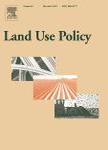版权所有:内蒙古大学图书馆 技术提供:维普资讯• 智图
内蒙古自治区呼和浩特市赛罕区大学西街235号 邮编: 010021

作者机构:Delft Univ Technol Delft Netherlands
出 版 物:《LAND USE POLICY》 (土地利用政策)
年 卷 期:2020年第98卷
页 面:104418-104418页
核心收录:
学科分类:0830[工学-环境科学与工程(可授工学、理学、农学学位)] 0828[工学-农业工程] 08[工学]
基 金:Glen Ross-Sampson Sudarshan Karki Department of Natural Resources, DNR
主 题:3D Cadastre 3D Visualization 3D Spatial Data Data Capture LADM Usability testing
摘 要:This paper describes research into the design, development and visualization of mixed 2D and 3D Cadastre. A schema has been developed to accommodate this data, with provision for a time component. This paper describes the schema, the visualization requirements, and the provision of LADM-compatible views of the data for the purpose of developing the 3D Cadastral prototype. A significant volume of 2D+ t Cadastral data, which also contained 2D+ t footprint representations of 3D parcels, is currently incorporated in the Cadastral Database of Queensland. A moderate number of 3D building units, and a smaller number of volumetric parcels have been hand-encoded (from the survey plans), and added to this database. The mixture has been disseminated and displayed in KML through Cesium JS. The visualization of cadastral parcels in 3D is a challenge, since legal boundaries are, in many cases, invisible in the real world;so how can we properly represent something that is not visible to our eyes? This paper uses the results from research looking into problems of occlusion and ambiguous perception (in terms of position, size and shape) of objects in the context of 3D cadastre visualization. The exploration of specific interaction techniques is essential to overcome these issues. After an initial internal usability test (with colleagues/ friends of the developers) our 3D Cadastres web-based dissemination prototype was improved. Next a public usability test is carried out to obtain feedback from different groups of professional users (legal, survey, ICT backgrounds). During the test, the users are asked to perform a series of tasks typical of cadastral systems. Each task is accompanied by a description to give the users some context. Then, each user is asked to reflect on his or her experience. In this paper we present the main results of the public usability test of the 3D Cadastres web-based dissemination prototype.